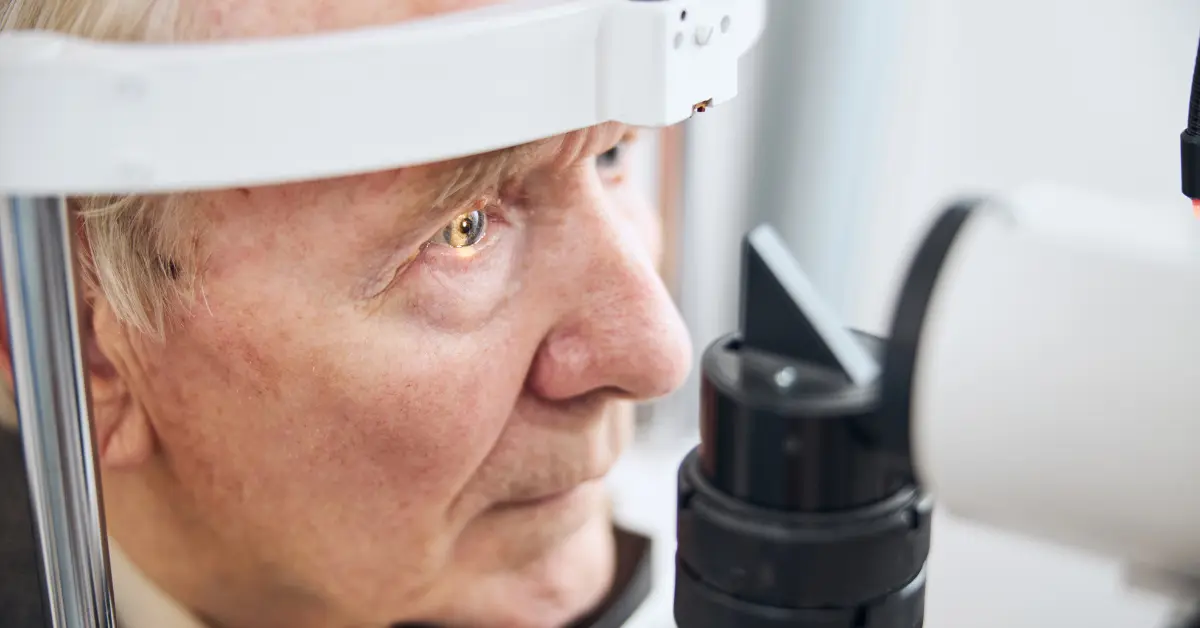Posterior Polar Cataract: At a Glance
One of the essential forms of lens opacity is the Posterior Polar Cataract.
It is a rare form of Congenital Cataract.
Posterior Polar Cataract affects 0.003% of people worldwide.
It was determined to be bilateral in 65–80 percent of instances.
It is usually inherited as an autosomal dominant disease but can be sporadic.
It is also connected with surgical problems, such as Posterior Subcapsular Cataracts and nucleus loss, which will be discussed in this article.
Posterior Subcapsular Polar Cataract
A Posterior Subcapsular Cataract (PSC) is a rapidly expanding opacity in the standard lens’s posterior region.
This cataract is especially prevalent in those who take steroids or have diabetes. PSC symptoms might emerge over several months and not at once.
These include light sensitivity, glare, and nearsightedness.
Numerous medical disorders and risk factors influence PSC development.
Because of this, PSC is more prevalent in younger individuals than other types of Cataracts.
According to the Beaver Dam Eye Study, the incidence of PSC in a single eye was approximately three percent.
The prevalence of cortical cataracts was approximately 8%, whereas nuclear cataracts were about 13%.
Symptoms

A PSC restricts and scatters the light reaching the retina, resulting in visual abnormalities.
Symptoms of rapid development of PSC include:
Decreased vision
A cataract, when it’s at the beginning stage, it’s slow and causes blurry vision.
The blurry vision is caused due to cloudiness in the outer layer of the lens.
Halos around lights
The diffraction of entering light due to cloudiness in the eye causes halo formation.
People with Cataracts commonly experience halos around the light.
Glare from headlights while driving at night
As Cataract grows, it gradually makes it difficult for light to enter the eye.
Since light is scattered, people may experience glare and light sensitivity.
Causes of Subcapsular Polar Cataracts
PSC are caused by the accumulation and clustering of protein fibers in the back of the lens, just in front of the posterior lens capsule.
As light rays are scattered, fewer rays reach the retina, decreasing visual quality.
Moreover, as you start to age, the process of lens protein buildup and clumping occurs naturally begins.
Other factors that lead to the development of PSC include
- Long-term use of corticosteroids
- Smoking
- Ocular conditions such as Retinitis Pigmentosa, inflammation from Uveitis, trauma, and radiation exposure
- Medical conditions like diabetes
- High myopia and pathological myopia
- High exposure to UV radiation
- Certain skin disorders, like atopic dermatitis
Classification of Subcapsular Polar Cataracts
Your doctor may classify your condition between 1+ to 3+ PSC.
These are the grades for classifying the cataract according to size in millimeters:
| PSC Classification | Size |
|---|---|
| PSC 1+ | 1 mm to 2 mm |
| PSC 2+ | 2 mm to 3 mm |
| PSC 3+ | 3+ mm |
PSC is a Cataract that can rapidly grow progress from PSC 1+ to PSC 3+.
Your doctor will monitor the PSC and recommend appropriate management, including surgery.
Treatment

Posterior Subcapsular Cataracts can be treated with surgery.
The surgeon removes the hazy natural lens and replaces it with an intraocular lens, a clear artificial lens (IOL).
Phacoemulsification of a Posterior Polar Cataract is particularly difficult since the posterior capsule at the site of the opacity may be weak, fragile, or even missing.
Early research revealed that this risk could affect as many as one-third of patients.
However, more current data place this risk somewhat lower.
More significant posterior polar opacities are related to an increased risk of capsular rupture.
Conclusion
Numerous factors contribute to the occurrence of Subcapsular Polar Cataracts.
It is a true challenge for cataract surgeons and is associated with a higher risk for surgical complications.
Different methods have been described to minimize this risk and improve its outcome.
You can consult your healthcare provider for post-cataract surgery eye care tips for a faster healing process.
Frequently Asked Questions
What is the reason for Posterior Polar Cataract?
Posterior Polar Cataracts are said to be brought on by the persistence of the hyaloid artery. It is also possible for mesoblastic tissue to invade the lens.
What are the complications of Posterior Polar Cataracts?
Phacoemulsification of a Posterior Polar Cataract is particularly difficult since the posterior capsule at the site of the opacity may be weak, fragile, or even missing. This increases the likelihood of posterior capsule rupture, vitreous loss, and other problems.
Does Posterior Polar Cataract affect vision?
Posterior Polar Cataract (PPC) is a distinct form of congenital cataract. It causes impaired distant and near vision and impairs the patient’s ability to perform daily tasks.
WowRx uses only high-quality sources while writing our articles. Please read our content information policy to know more about how we keep our content reliable and trustworthy.






